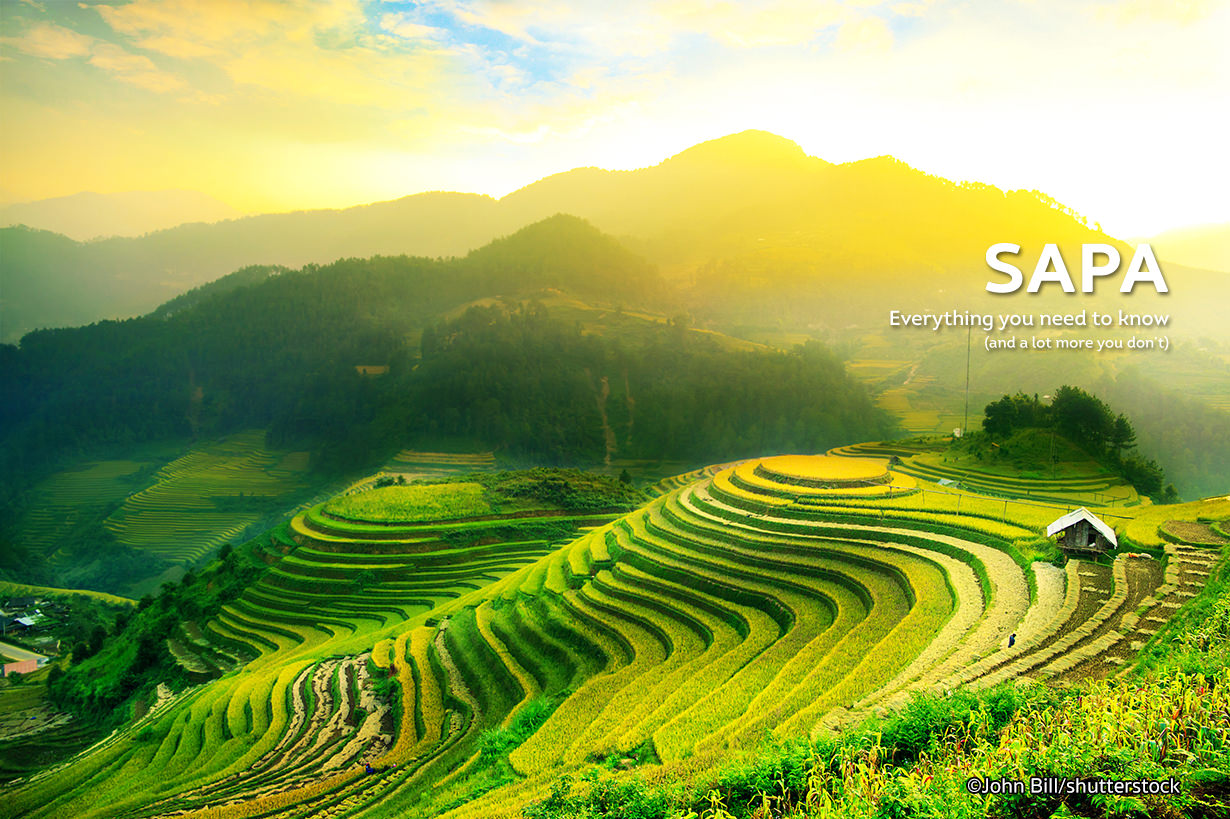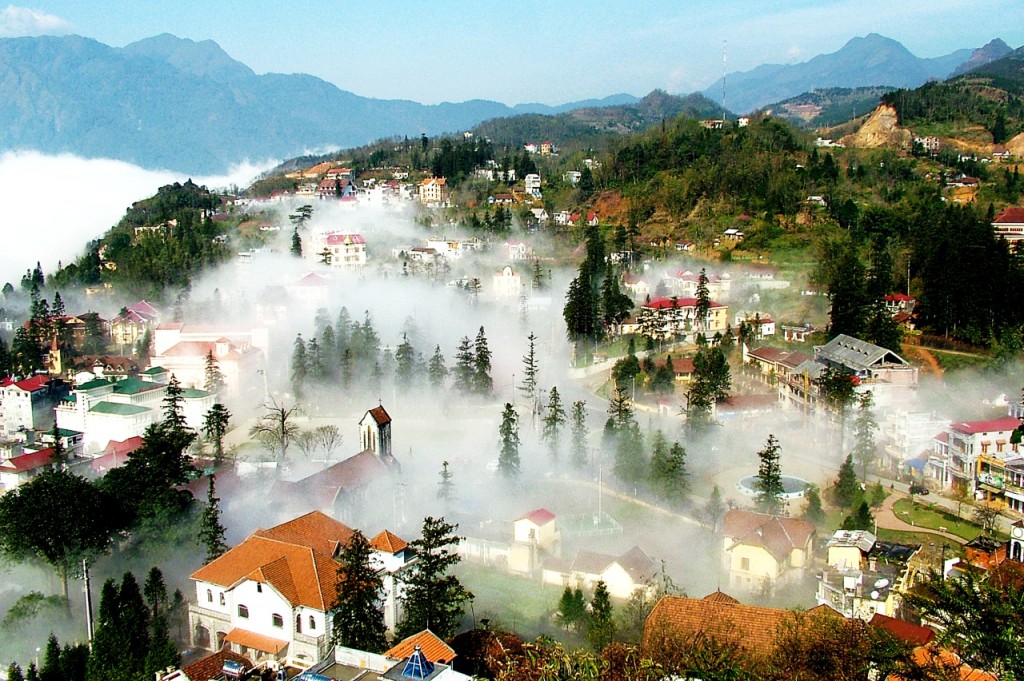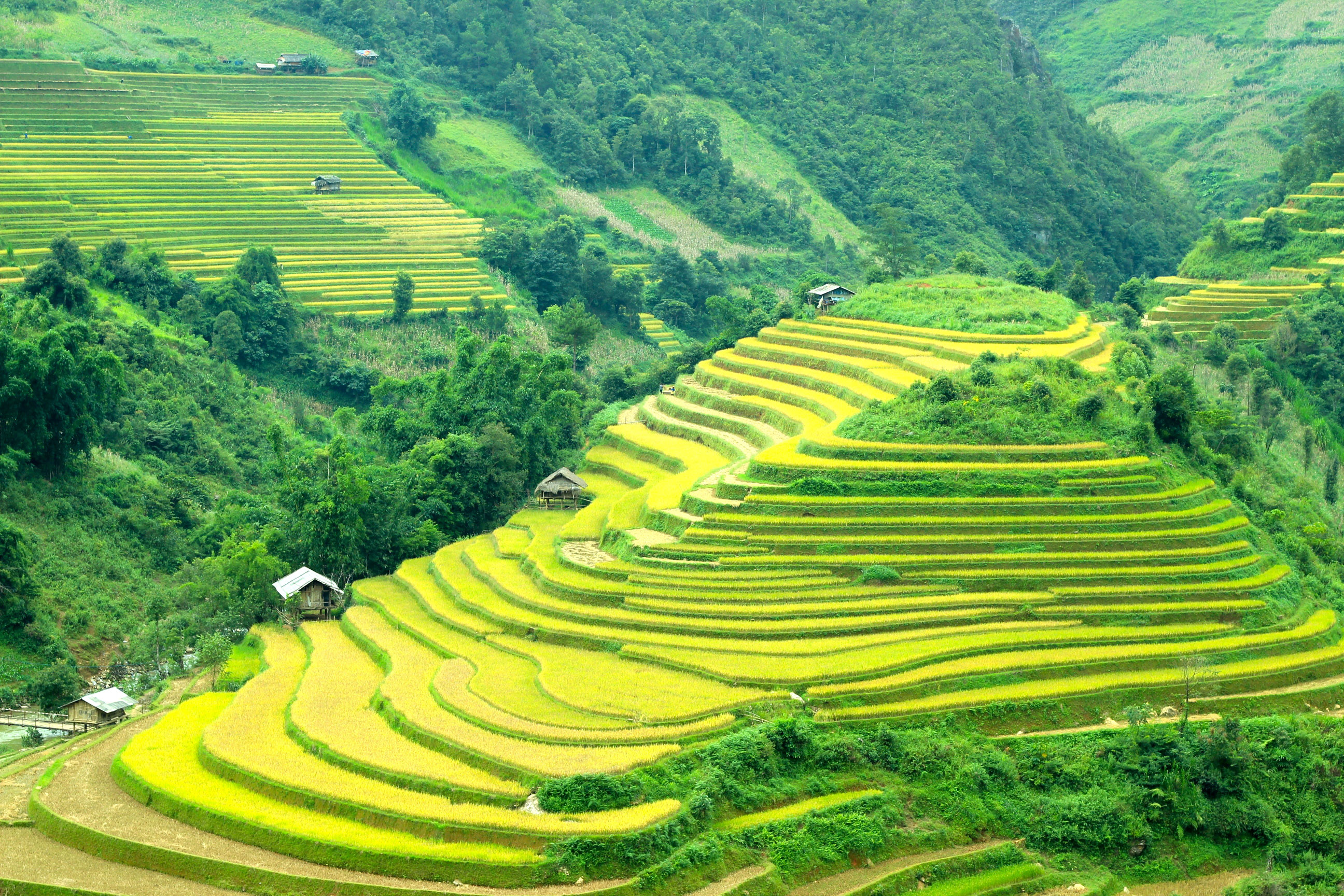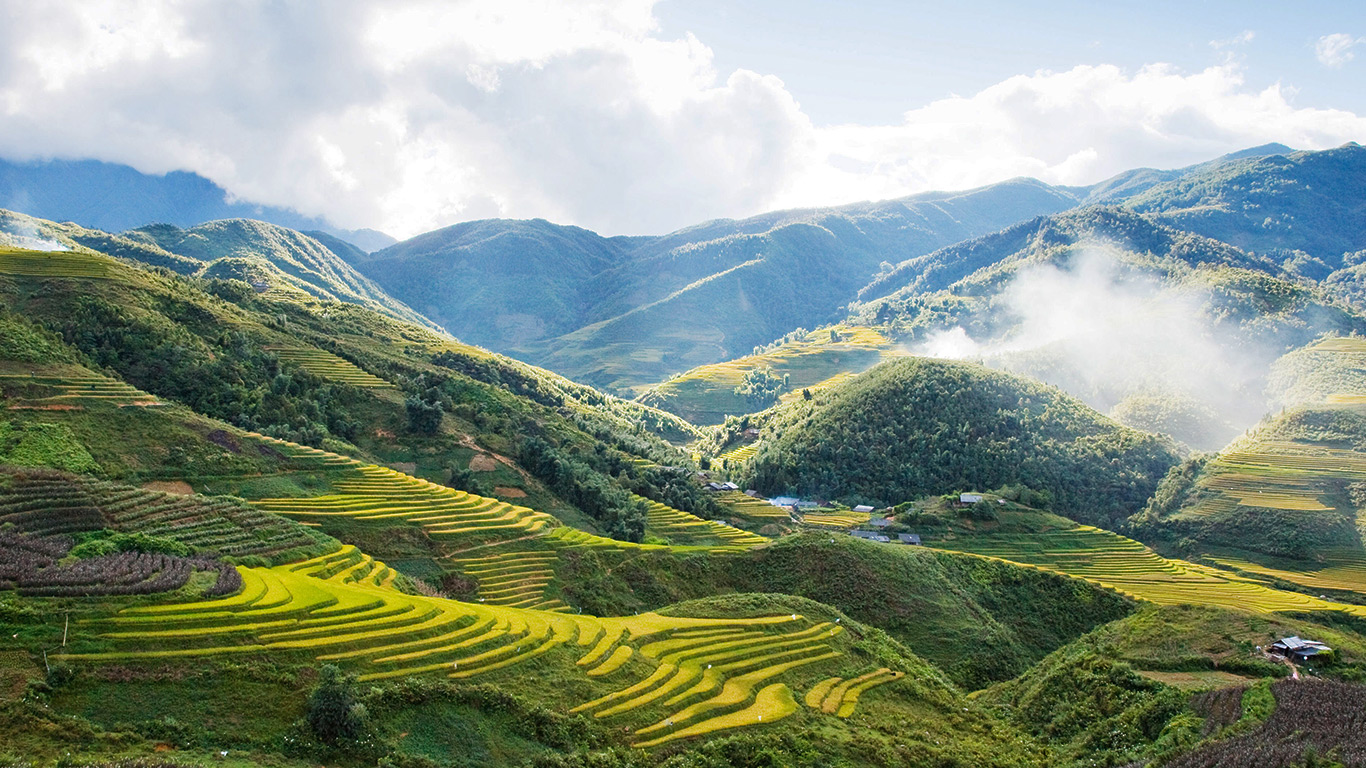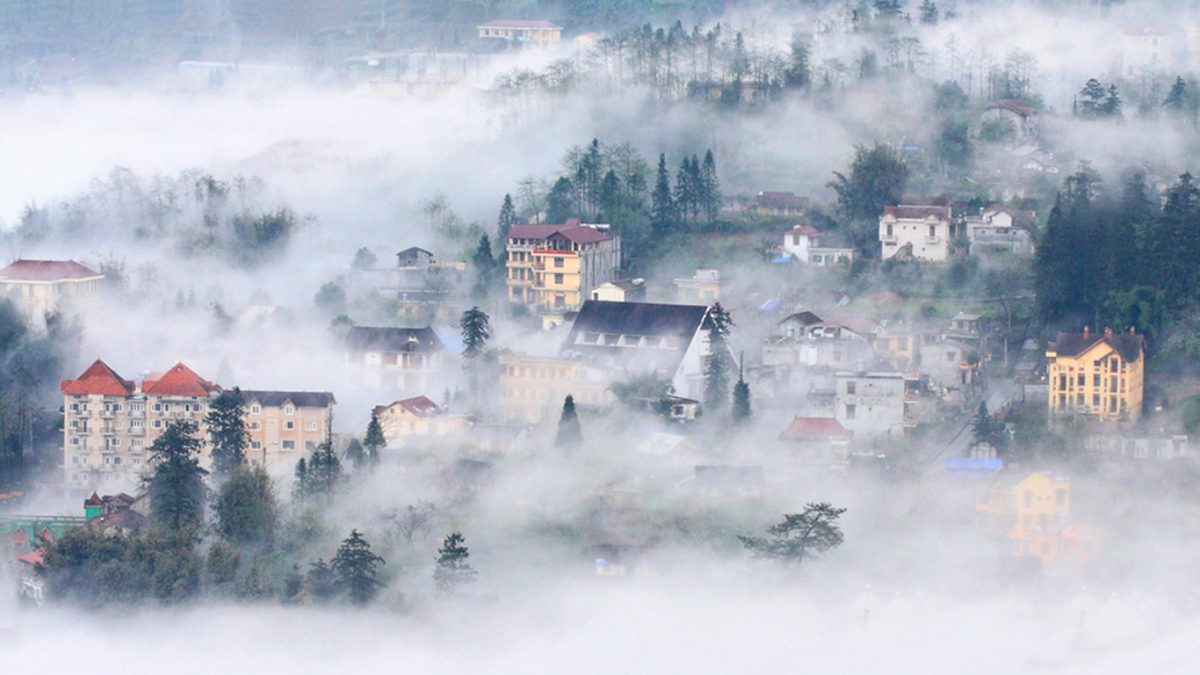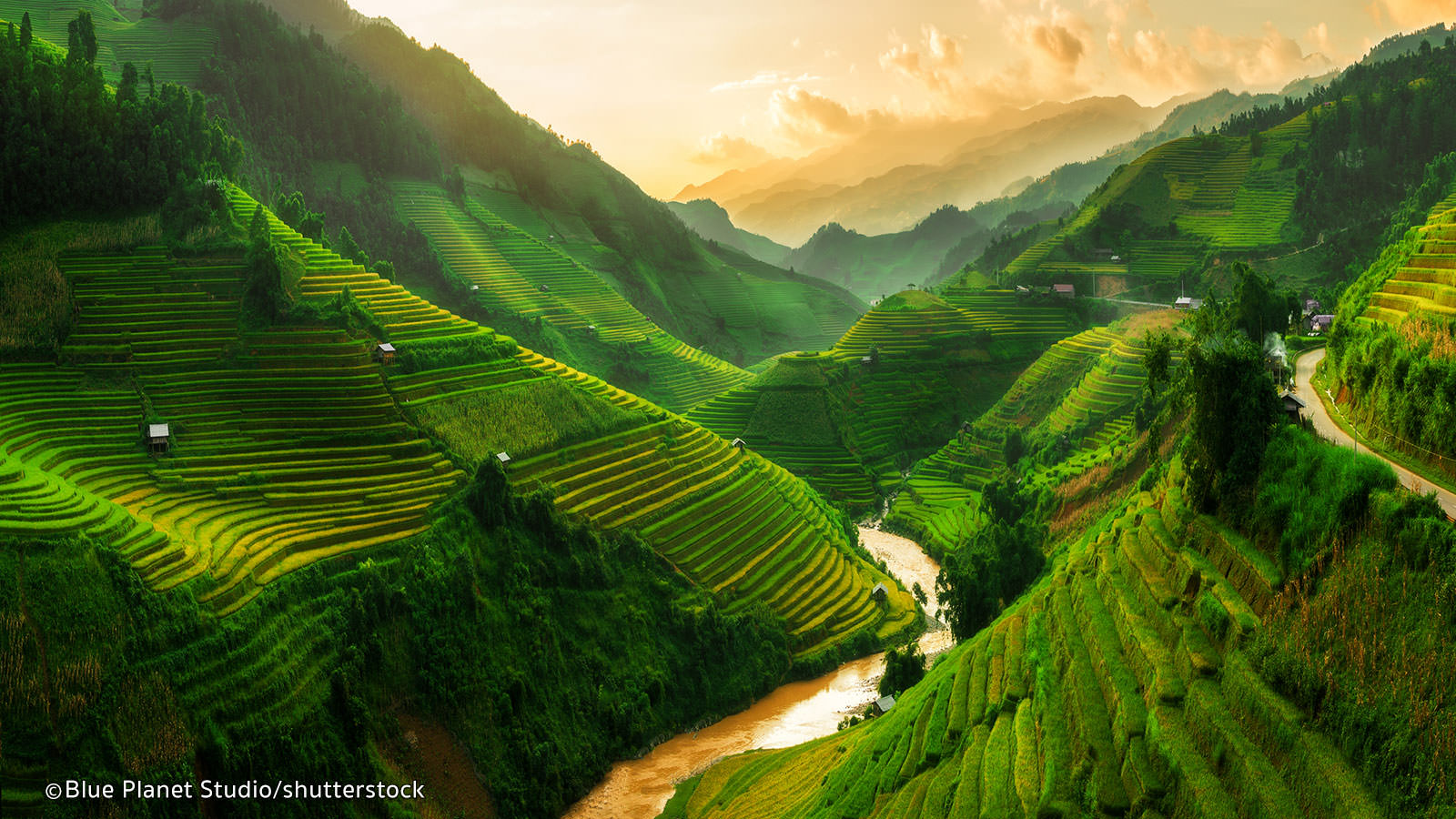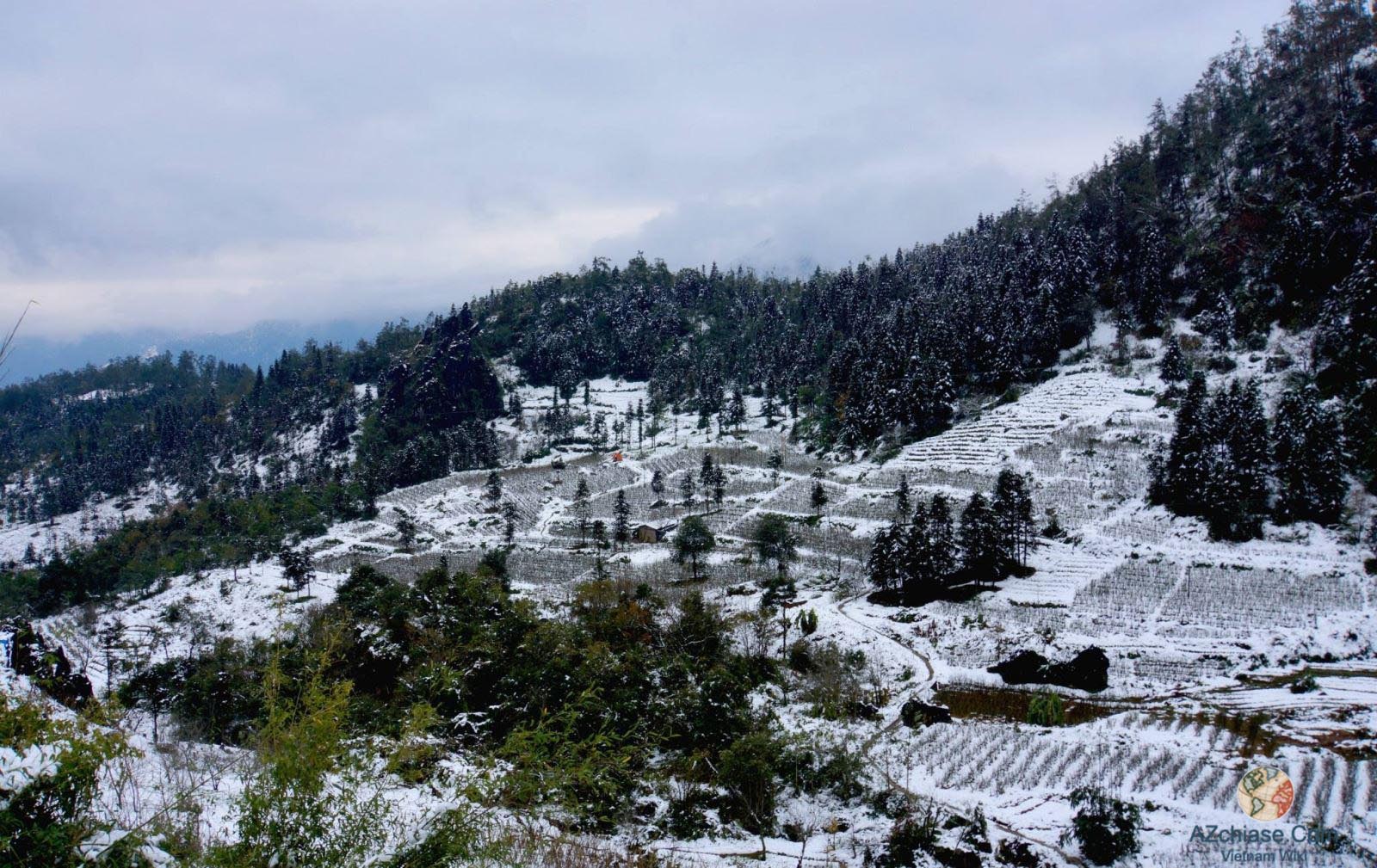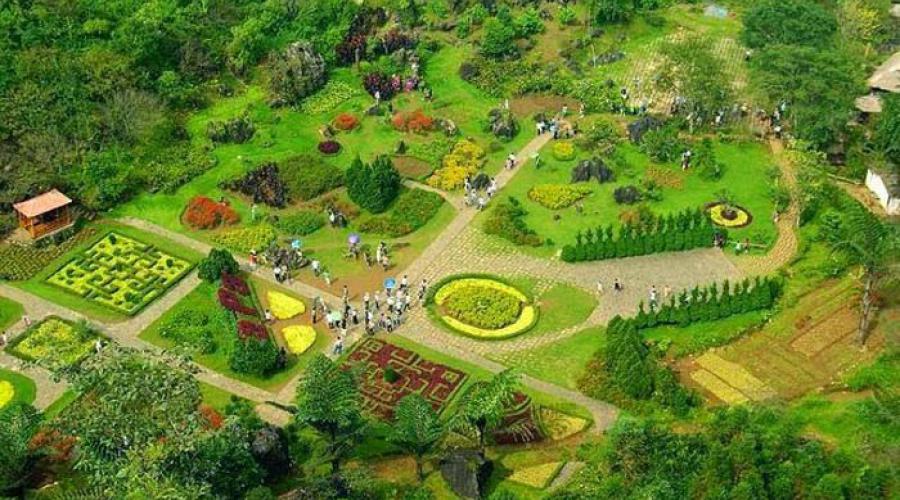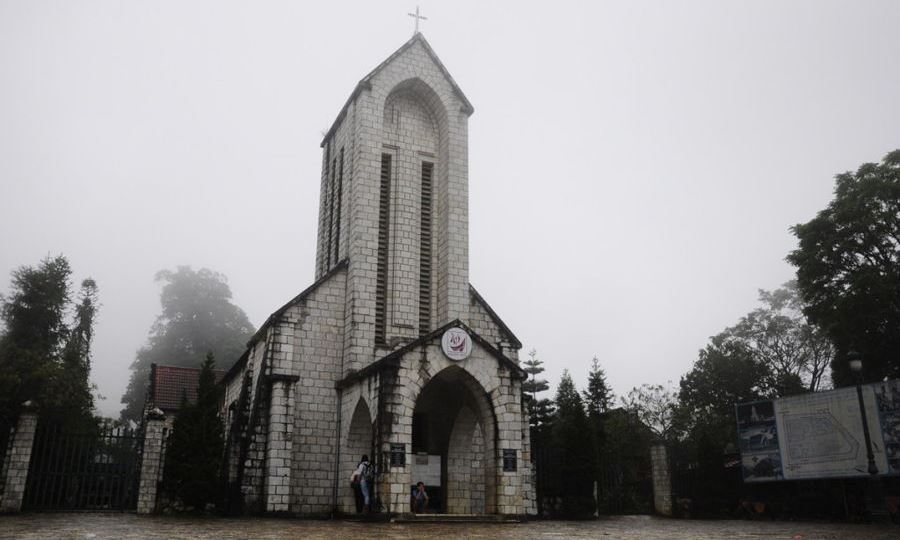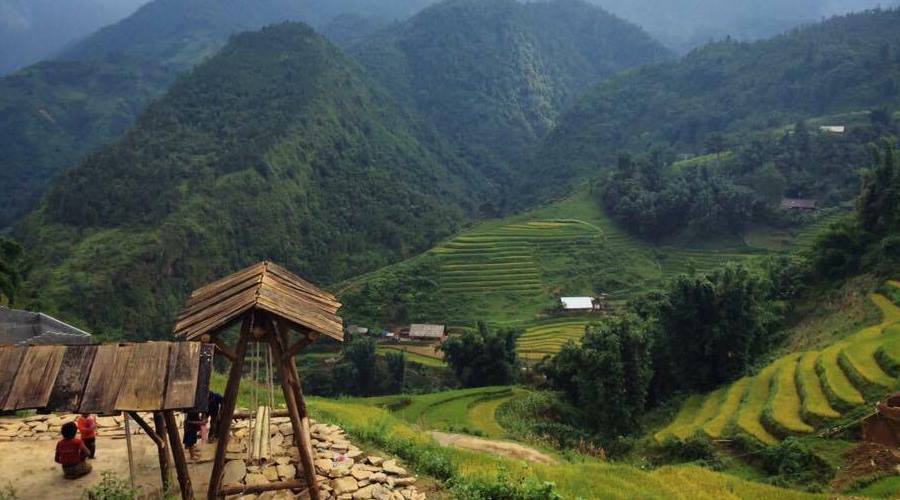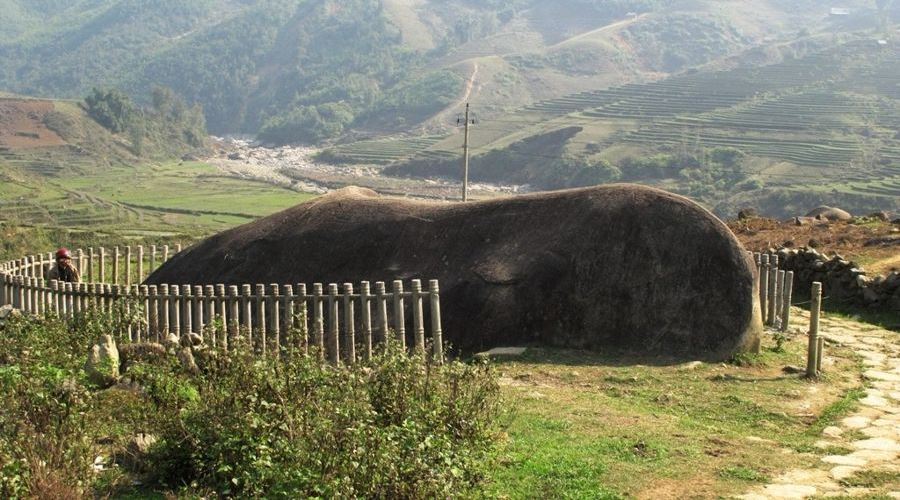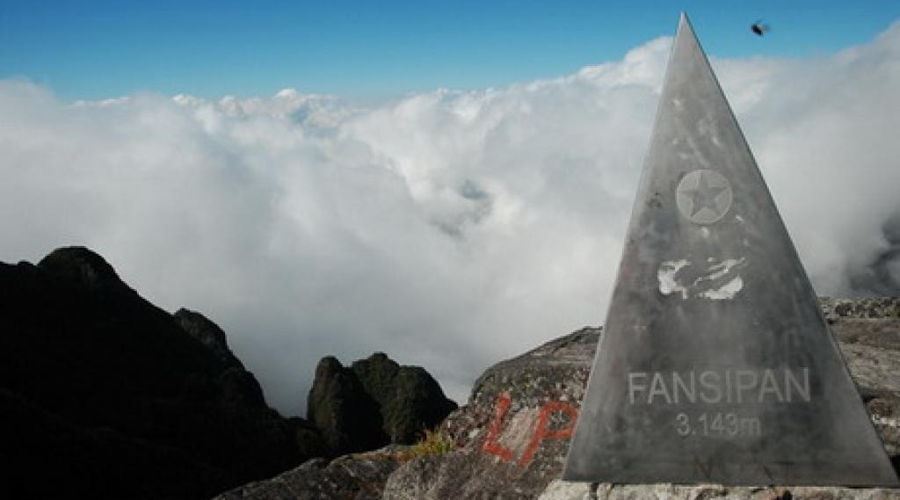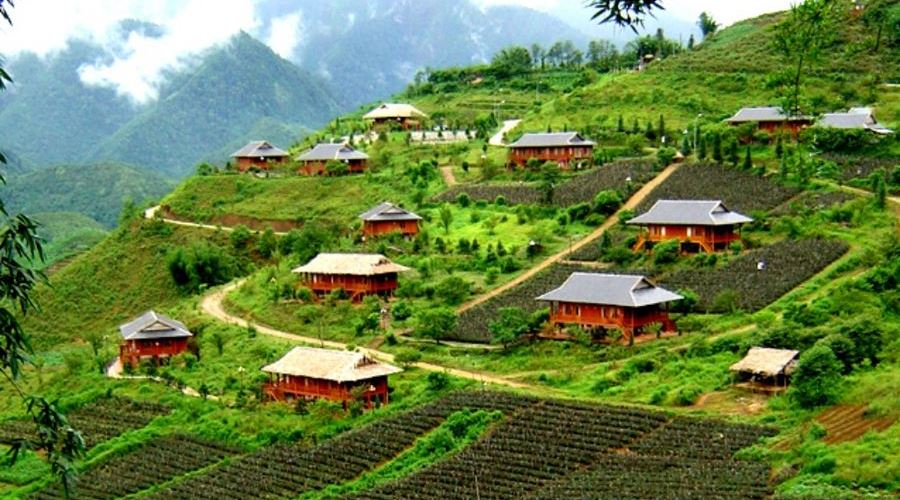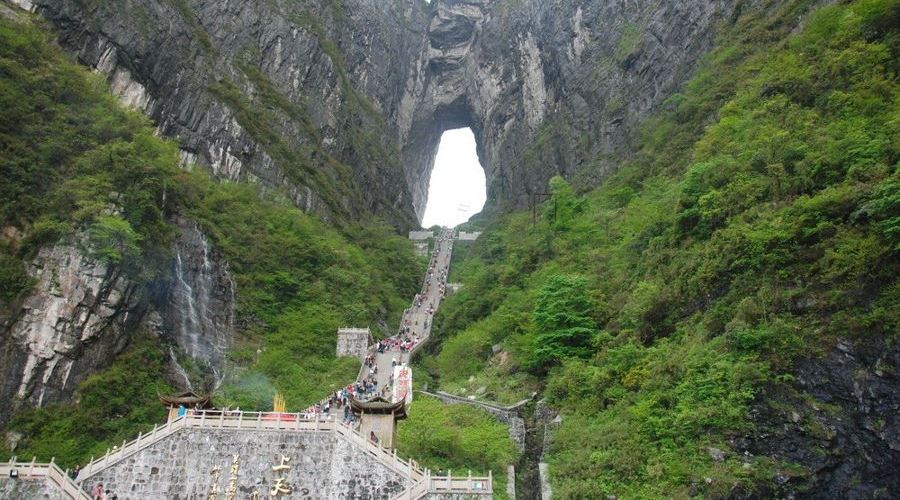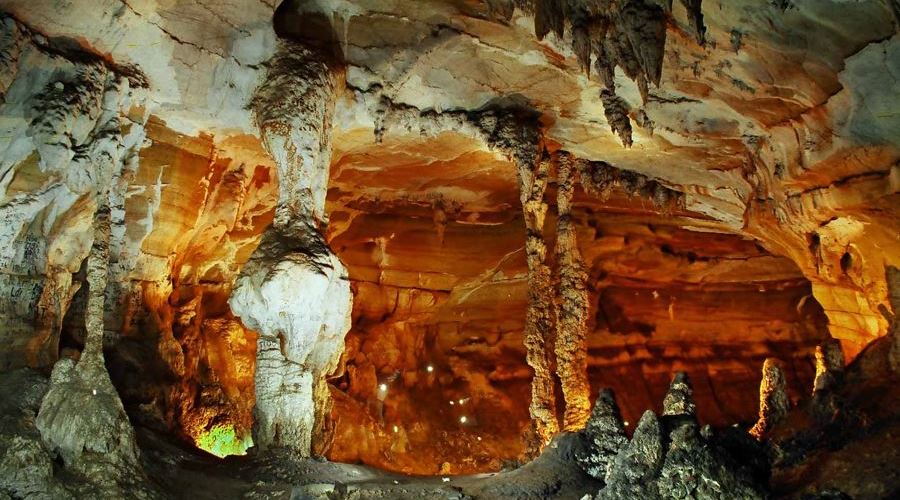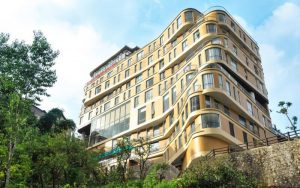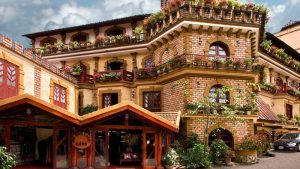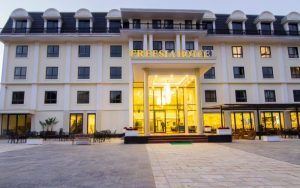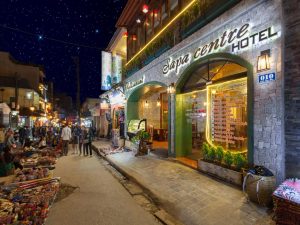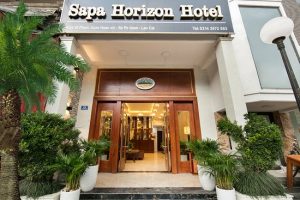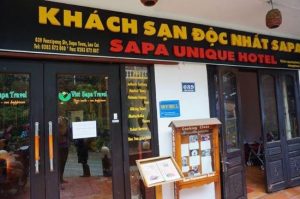Sapa is a mountainous district of Lao Cai province. This famous tourist site is complimented in many foreign magazines by its fresh air, wonderful scenes and diverse culture of local ethnics.
GEOGRAPHY
Sapa town, located at the height of 1600m above sea level, is also called the roof of Indochina, 38km away from Lao Cai city and 376km from Hanoi. It has population of about 42 thousand people, including 6 minority ethnics: Dao, Mung, Tay, Giay, Xa Pho, Kinh and Hoa with many traditional customs and cultures.
CLIMATE
At the height of 1,600m above sea level, the average temperature of the area is 15-18°C. It is cool in summer and cold in winter.
Visitors to Sapa in summer can feel the climate of four seasons in one day. In the morning and afternoon, it is cool like the weather of spring and autumn. At noon, it is as sunny and cloudless as the weather of summer. And it is cold in the evening. With no advance warning of a thunderstorm short and heavy rains may come at noon on any summer day. Subsequently, a rainbow appears, transforming Sapa into a magic land, which for years has been a constant source of poetic inspiration, lights up the whole region.
The best time to witness the scenic beauty of Sapa travel is in April and May. Before that period, the weather might be cold and foggy; after that period is the rainy season. In April and May, Sapa is blooming with flowers and green pastures. The clouds that settle in the valley in early morning quickly disappear into thin air.
TRANSPORTATION
Train to Lao Cai: All the trains go to Lao Cai town (340 km from Hanoi), it is the end station (25 km from Sapa): If you’re traveling from Hanoi to Sapa by train, all the trains end in Lao Cai town. Trains run throughout the day and many travellers and tourist travel in the evening (20.30 – 22.00 pm). The nigth train arrives to Lao Cai town at 6.00 – 7.00 am.
Buses from Lao Cai town to Sapa: You have to take a public bus or taxi from Lao Cai town to Sapa, The public bus station is in the center of town, 300 meters from the train station. From Lao Cai, minibuses to Sapa leave from the City Bus Station (Ben Xe Khach). Buses leave every 30 minutes from 06:00 to 18:00. The trip takes about an hour.
RESTAURANTS/DINING
Bamboo sticky rice (Cơm lam)
“Lam” rice (or Bamboo Cooked Rice) is one of the typical dishes of ethnic minorities in the mountainous area of Northern Vietnam. Originally, “lam” rice was discovered as a kind of food for a long journey in the forests. Upon the journey, Vietnamese ethnic people cook rice in a small bamboo pipe instead of a pot. By the time passed, “lam” rice has become common and popular, and also preferred as an impressive blend of rice, stream water and a slight scent of bamboo.
“Lam” rice is made from sticky rice which is grown on the terraced rice fields. The locals put the sticky rice in a small bamboo pipe with some water added. For more flavors, ethnic people usually use stream water and add some salt in. The bamboo pipe then will be sealed up by banana leaves and roasted above red coals stove or hot fire. That process will be done within around 30 minutes and then it will be served with grilled chicken or grilled Man pork. And it’s perfect idea to try it in the cool or cold weather once visiting Sapa in your life.
Seven colours sticky rice
Travelling to Sapa, you will have a chance to enjoy seven colours sticky rice- a traditional dish of Nung ethnic minority in Muong Khuong, Lao cai. Sticky rice is processed into colours: pink, scarlet, crimson, dark green, yellow green, and white. All of its colours are made from the leaves of forest trees so it is good for health. In New year day, every family eats this sticky rice and wish for lucky and happy New Year.
Sapa Cap Nach Pork (Thịt heo cặp nách Sapa)
“Cap nach” means “carried-under-arm” because those pigs might be just about 10kg, easy to carry underarm. Cap Nach pork is a specialty of this mountainous region. The locals usually roast a whole pig directly on the charcoal stove. The barbecue time bases on the volume of the heat and the weight of the pig as long as the skin of the pig is crispy while the meat inside is ripe, soft and fatless. To make it tastier, the food will be served as slicing pieces dipped in soy sauce or fish sauce which mix with honey and special spicy leaf. You’ll be rewarded with juicy, flavorful pork meat and crispy skin (crackling).
The Baked Foods
Coming to Sapa do not miss the baked foods. In the cold air, sit with friends, gather together and enjoy a hot grills, there’s nothing better. The baked foods in Sa Pa are plenty and diverse, it seems whatever dishes can be baked. Chicken eggs, duck eggs, meat skewers, meat wrapped vegetables, rice, and chicken legs to chicken wings, corn, potatoes … In particular, the baked foods here are often marinated with spices that only has in upland so the flavor is very attractive..
Thang Co (Thắng cổ)
Thang Co is the traditional food of H’Mong people which has been cooked for hundreds of years. Thang Co is a type of soup made of horsemeat, horse’s viscera and horse’s bone. You might feel a little bit panic-stricken about its ingredients but that feeling will be blown away once you taste it. Cooking this dish not only takes time but also require the skill of cooks how to use the seasonings which comprise of 12 spices from cardamom, ginger, citronella, anise to cinnamon twig.
The H’mong people will cook the horsemeat with these 12 spices in a big pot within a couple of hours. To make the flavor of Thang Co soup tastier, they will serve with fresh vegetables and a special red hot pepper name Muong Khuong.
Smoked meat
when visiting the houses of H’Mong people in their villages, you can see many pieces of meat gathered on a tray. The meat comes from the horse, buffalo, and pig and they are smoked to store. This method of storing food can keep the food usable up to a few years. When eating, the meat is carefully washed and fried with tomato, and bamboo sprout. The dish will have a unique fragrance and featured taste when it is done.
Black Chicken
If you plan to visit Sapa, you should definitely put the black chicken on the must-try list as this is considered as one of the most attractive dishes in Sapa. Unlike the other kinds of chicken, especially turkey, the black chickens in this mountainous area are small, just about 1.2kg and looks strange with super black feathers but very fragrant and tasty. There are so many different dishes can be made from this black chicken such as fried chicken, boiled chicken, steamed chicken, etc. But the most outstanding and high recommended one must be grilled black chicken with honey served with mint leaves and a dipping sauce of salt, lime, and chili.
Salmon Sour Hotpot
It is the fact that salmon was originally only found in the cold regions such as Europe or America so the appearance of this fish in Sapa makes a lot of diners curious. With bold taste, pretty pink meat, high nutritional ingredients, salmon is one of the most luxurious dishes for tourists coming to Sapa – Lao Cai and also a reason why salmon hot pot is listed as one of the must-try specialties in Sapa. With the cool weather all year round and snowy winter, Sapa salmon is blessed to have very fresh meat, firm muscles and almost no grease.
It is said that Sapa salmon hot pot recipe is similar to a sour soup in Southern Vietnam. The main ingredients are salmon, tomato, and pineapple and come along with special Sapa-grown wild vegetables including watercress pumpkin buds, etc.
If you plan to visit Sapa on a cold winter day, do not forget to try this fantastic salmon hot pot and you will, with no doubt, have one of the best meals in Sapa, Vietnam.



